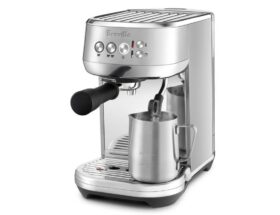
How to make Cascara Syrup (The Easy Way!)
Have you ever wondered about the magic behind the sweet, fruity tang of your favorite coffee recipe? We’re spilling the beans on the secret ingredient, Cascara Syrup. Strap in for an aromatic journey!
Cascara Syrup is a delightfully sweet syrup derived from the coffee cherry fruit. Although ‘Cascara’ translates to ‘husk’ in Spanish, don’t let the name fool you. This unique syrup is far from being just a by-product. It’s a revolution in the coffee world!
Table of Contents
- Is Cascara Syrup Banned?
- History and Cultural Significance of Cascara Syrup
- Coffee Cherry Fruit: Understanding the Source
- The Complete Guide to Cascara Syrup
- How to Make Cascara Syrup: A Step-by-Step Guide
- Frequently Asked Questions
- 1. What is Cascara Syrup?
- 2. How is Cascara Syrup Made?
- 3. How Do I Use Cascara Syrup?
- 4. Where Can I Buy Cascara Syrup?
- 5. Can I Make Cascara Syrup at Home?
- 6. Is Cascara Syrup Good for Health?
- 7. Can Cascara Syrup Be Used in Cold Brew?
- 8. Does Cascara Syrup Contain Caffeine?
- 9. What Does Cascara Syrup Taste Like?
- 10. Can I Use Cascara Syrup in Baking?
- 11. Is Cascara Syrup Vegan?
- 12. How Long Does Cascara Syrup Last?
- Conclusion
Origin of Cascara Syrup
Primarily sourced from Yemen and Ethiopia, Cascara Syrup has its roots deep in coffee culture. Traditionally, these coffee-producing regions use the coffee cherry fruit to brew a tea-like beverage. Today, this delicious ingredient is making waves in coffee recipes globally.
Making the Syrup
The making of Cascara Syrup is quite a meticulous process. It starts with the harvesting of coffee cherries. The cherries are then dried, yielding a product known as ‘Cascara’. This Cascara is steeped in hot water, and the resulting liquid is reduced to a sticky, sweet syrup.
Whether you’re a coffee connoisseur or a casual sipper, Cascara Syrup is your ticket to a whole new level of coffee appreciation. With its unique taste and multiple health benefits, it’s time to make this wonderful syrup a staple in your kitchen!
Interesting Fact to Know
Here’s an engaging titbit for you: Cascara Syrup is not only a sweetening agent but also a health drink! Rich in antioxidants and caffeine, it’s a refreshing booster to kickstart your day.
Is Cascara Syrup Banned?
In some countries like the United States, Cascara syrup was not initially approved by the Food and Drug Administration (FDA) due to its novel food status. However, it’s not outright banned and is increasingly being found in cafes and stores across the country. As always, it’s crucial to ensure that any Cascara products you purchase are sourced from reputable sellers who comply with all necessary health and safety regulations.
History and Cultural Significance of Cascara Syrup
Cascara Syrup, a delightful product that has recently been making waves in the coffee world, carries a rich history and cultural significance. Originating from the husks of coffee cherries, this syrup has roots that stretch far back in time, and across multiple cultures.
The Historical Roots of Cascara
The word ‘Cascara’ is derived from the Spanish term for ‘husk’. Before transforming into the exotic syrup that we’ve come to know today, it was commonly used in various forms by different cultures. Its historical roots can be traced back to coffee-producing countries like Yemen and Ethiopia, where farmers would dry and brew coffee cherry husks into a tea-like beverage.
Interestingly, this was essentially the first version of coffee, as it predates the extraction of coffee beans. The significant element to note here is that Cascara was not initially produced for its taste, but rather for its medicinal properties.
Traditional Uses of Cascara
Traditionally, Cascara was used as a natural remedy for various ailments. In folk medicine, it was considered a digestive aid and was used to treat liver problems and constipation. The tea made from Cascara was known to be high in antioxidants, and was believed to have anti-inflammatory and anti-cancer properties.
Cascara Across Different Cultures and Regions
In many coffee-growing nations, Cascara has long been a part of everyday life. In Yemen, it was consumed as ‘Qishr’, a warm, spiced drink. In Bolivia, it was known as ‘Sultana’, and in Ethiopia, it was enjoyed as a drink called ‘Hashara’. Each culture had its own unique spin on this versatile ingredient, integrating it into their customs and traditions.
Today, Cascara has evolved into an exciting, innovative ingredient in the global coffee industry. The journey from an ancient medicinal remedy to a modern coffeehouse staple highlights the versatility and enduring cultural significance of Cascara.
Coffee Cherry Fruit: Understanding the Source
For many, the journey of coffee begins and ends in the cup. However, there is a fascinating and complex process behind every sip. The coffee we drink and cherish actually originates from the coffee cherry fruit. Its cultivation and processing are pivotal stages in the life-cycle of your favorite brew. By understanding the source, we can appreciate the beverage on a deeper level.
Appearance and Cultivation of Coffee Cherry Fruit
Coffee cherries are small fruits, approximately the size of a grape, that turn a bright, beautiful red when they’re ripe and ready for harvesting. Prior to ripening, they are green in color, much like olives. Each cherry typically contains two coffee beans nestled snugly against each other.
Cultivation of these cherries requires a delicate balance of right temperature, altitude, rainfall, and soil conditions. They are generally grown in a band around the equator, in regions colloquially known as the ‘coffee belt’. This cultivation is a labor-intensive process, carried out primarily on small, family-owned farms.
The Harvesting Process
The harvesting of coffee cherry fruit is usually done by hand, which can be quite labor-intensive. There are two methods of harvesting:
- Selective Harvesting: The ripe cherries are picked individually, leaving the unripe ones for later. This method, although time-consuming, ensures only the best quality cherries are chosen.
- Strip Harvesting: All the cherries are stripped off the branch at once, regardless of their ripeness. This is a faster method but may include unripe or overripe cherries, which can impact the quality of the coffee.
From Cherry to Bean: The Separation Process
Once harvested, the coffee cherries are processed to extract the coffee beans. The outer flesh of the cherry is removed, often through a method called ‘wet processing’, where the cherries are soaked in water and the beans are separated from the pulp. The beans are then left to dry, either in the sun or using drying equipment.
The final step involves removing the parchment-like layer surrounding the bean, known as the ‘endocarp’. The resulting green coffee beans are then ready for roasting, which brings out the flavors and aromas we associate with coffee.
The Complete Guide to Cascara Syrup
Cascara Processing Techniques
If you’re a true coffee aficionado, you’re probably familiar with the term ‘Cascara.’ Originating from the Spanish word for ‘husk,’ Cascara is the dried peel or skin of coffee cherries. This byproduct of coffee production has been transformed into a delicious syrup that is gaining popularity worldwide. But how exactly is Cascara processed into this syrupy delight? Let’s dive into the fascinating world of Cascara processing techniques.
Traditional Cascara Processing
Traditionally, coffee farmers would harvest the coffee cherries and separate the beans from the cherry’s outer skin. The discarded skins were then left to dry in the sun until they achieved a certain level of crispiness. This dried Cascara was then infused with hot water to create a tea-like beverage. To transform this into a syrup, the infusion was simmered with sugar until it reached the desired consistency.
Modern Cascara Processing
As Cascara syrup started gaining popularity, modern processing techniques were developed to streamline production and enhance flavor. Today, the dried Cascara is often cold-pressed to extract its delicious flavor. This process, similar to winemaking, involves soaking the dried skins in cold water for up to 48 hours before pressing. The resulting juice is then simmered with sugar, just like in the traditional process, to produce the syrup. This technique is believed to preserve more of the Cascara’s natural flavors and sweetness.
Comparing Traditional and Modern Techniques
Both traditional and modern Cascara processing techniques have their unique advantages. The traditional method, while more time-consuming, is revered for its simplicity and minimal waste. It’s a no-frills process that allows the natural flavors of the Cascara to shine through. On the other hand, the modern technique, with its cold-pressing process, tends to extract more flavor and sweetness from the Cascara, resulting in a more intense syrup. However, it requires more specialized equipment and knowledge.
Flavor Profile and Aromas: An Exploration of Cascara Syrup
Immerse your taste buds in the exotic experience that is Cascara Syrup. Derived from the dried husks of coffee cherries, this unique syrup promises a taste journey like no other. But how does its flavor compare to the coffee we all know and love? Let’s dive in and find out.
Exploring the Taste of Cascara Syrup
Cascara syrup is a fascinating blend of flavors. It bursts forth with a rich, fruity sweetness that is reminiscent of ripe cherries, dates, and tamarind. This is balanced with a subtle tartness that gives it a refreshing twist. Unlike traditional coffee, which can often be bitter or acidic, Cascara syrup presents a smoother, much more refined flavor profile.
Unraveling the Aroma of Cascara Syrup
The aroma of Cascara syrup is just as enticing as its taste. As soon as you open a bottle, your senses are greeted with a bouquet of fragrant notes. The primary aroma is a delightful mix of sweet fruits, followed by hints of floral undertones. The overall experience is a captivating blend that lures you into taking that first, unforgettable sip.
Comparing Cascara Syrup to Coffee
- Flavor: While coffee ranges from bold and bitter to acidic and fruity, Cascara syrup offers a sweeter, fruit-forward profile with a pleasant tartness that rounds it off.
- Aroma: Compared to coffee’s roasted, sometimes nutty smell, Cascara syrup offers a sweeter, fruitier aroma that is both refreshing and inviting.
Whether you’re a coffee connoisseur looking to expand your palate or a novice exploring the coffee world, Cascara syrup is a must-try.
How to Make Cascara Syrup: A Step-by-Step Guide
Have you ever thought about making your own Cascara Syrup? If the answer is yes, then you’re in the right place. Let’s dive right into it.
The Magic of Cascara
Cascara, which means ‘husk’ in Spanish, is the dried skin of coffee cherries. Often discarded or used as compost in coffee farms, these husks can be brewed into a delightful tea or made into a sweet syrup. When made into syrup, Cascara adds a unique tangy sweetness to your coffee, cocktails, and even desserts.
Ingredients
- 1 cup of Cascara
- 4 cups of water
- 2 cups of granulated sugar
Step-by-Step Guide to Making Cascara Syrup
- First, add the Cascara and water into a large pot. Bring the mixture to a boil.
- Once boiling, reduce the heat and let it simmer for about 30 minutes. This will extract the flavors from the Cascara.
- Next, strain the mixture into a bowl, discarding the used Cascara.
- Return the liquid to the pot, add the sugar, and stir until fully dissolved.
- Finally, let the syrup cool before transferring it to a clean bottle or jar. Your homemade Cascara syrup is now ready to use!
By following these steps, you’ll have a delicious and versatile syrup that you can use to enhance the flavor of your favorite beverages and desserts. Enjoy the process and the sweet reward at the end!
Frequently Asked Questions
1. What is Cascara Syrup?
First and foremost, Cascara syrup is an innovative and exciting addition to the world of coffee. It is essentially a sweet, tea-like syrup made from the dried husks of coffee cherries, combining the rich flavors of coffee and tea in a unique blend. This syrup provides a delightful twist to your regular coffee or tea, making it a must-try for all coffee enthusiasts out there.
2. How is Cascara Syrup Made?
Creating Cascara syrup is an art in itself. The process begins with the careful selection and harvesting of ripe coffee cherries. Next, the cherries are meticulously dried in the sun, after which the husks are separated from the beans. These husks are then boiled in water and sweetened to taste, creating a syrup that’s bursting with flavor.
3. How Do I Use Cascara Syrup?
- As a Sweetener: Cascara syrup can serve as a sweetener for your coffee, tea, or even pastries. It adds a unique flavor that truly sets it apart from conventional sweeteners.
- In Cocktails: Yes, you read that right! Cascara syrup makes for a great ingredient in various cocktails, providing a unique twist to your favorite drinks.
- In Cooking: Cascara syrup can be used in a variety of recipes, adding a sweet, fruity note to your meals.
4. Where Can I Buy Cascara Syrup?
Cascara syrup is available at select coffee shops and online stores. Remember to choose a reputable source to ensure you’re getting a high-quality product.
5. Can I Make Cascara Syrup at Home?
Definitely! Making your own Cascara syrup is a fun and rewarding process. You’ll need dried coffee cherry husks, which you can purchase from specialty coffee retailers. From there, it’s just a matter of boiling the husks with water and sugar, then straining the mixture to get your homemade Cascara syrup.
6. Is Cascara Syrup Good for Health?
- Rich in Antioxidants: Cascara syrup is packed with antioxidants which are beneficial for overall health.
- Low in Calories: Compared to traditional syrups, Cascara syrup has fewer calories, making it a healthier alternative.
- Natural Energy Boost: The caffeine content in Cascara syrup provides a gentle energy lift, without the jitters often associated with coffee.
7. Can Cascara Syrup Be Used in Cold Brew?
Indeed, Cascara syrup adds a remarkable depth of flavor to cold brew coffee. Its subtly sweet and fruity notes perfectly complement the strong, bold flavors of cold brew, creating a refreshing and invigorating beverage.
8. Does Cascara Syrup Contain Caffeine?
Yes, Cascara syrup does contain caffeine, but in smaller amounts compared to coffee. This makes it a great option for those seeking a milder energy boost.
9. What Does Cascara Syrup Taste Like?
Cascara syrup has a distinct taste profile that’s hard to pin down. It’s sweet but not overly so, with hints of cherry, red fruit, hibiscus, and even maple syrup. The taste can vary depending on the coffee variety and how the cherries were processed.
10. Can I Use Cascara Syrup in Baking?
Absolutely! Cascara syrup can be a fantastic addition to your baking recipes. It can be used to sweeten cakes, cookies, and pastries, giving them a unique flavor that’s sure to impress.
11. Is Cascara Syrup Vegan?
Yes, Cascara syrup is typically vegan, as it’s made from coffee cherries, water, and sugar. However, it’s always a good idea to check the label for any additional ingredients.
12. How Long Does Cascara Syrup Last?
When stored properly in a cool, dark place, Cascara syrup can last up to two weeks in the refrigerator. Remember to always check for any signs of spoilage before using.
Conclusion
Having ventured through the vibrant world of Cascara Syrup, you are now equipped with profound knowledge about this unique ingredient. From understanding its origins to exploring its diverse uses in brewing delightful cups of coffee, we’ve touched every crucial aspect.
Now, it’s your turn to take this journey forward. We encourage you to experiment with Cascara Syrup, infusing it in your casual brew or uniquely crafted recipes. Furthermore, share your experience with the enthusiastic coffee community waiting on TenCoffees.
We anticipate your comments and are eager to read about your coffee adventures with Cascara Syrup. Let’s continue to embrace the myriad flavors and experiences that coffee offers us.









